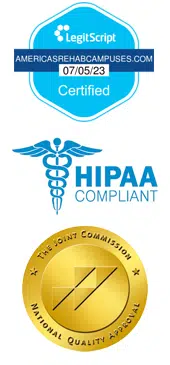As of 2016, 948,000 people in the US reported using heroin in the past year, and many of these were young adults aged 18-25, according to the National Institute on Drug Abuse.
Perhaps even more frightening is that the number of first-time users doubled between 2006 and 2016 for people (primarily males) in this age bracket. The American Society of Addiction Medicine reports that some 25% of those who use heroin regularly will get addicted to the substance.
But it’s not only this age group that we need to be worried about. According to the Centers for Disease Control and Prevention (CDC), heroin use is on the rise across all demographics, especially for those who are already addicted to alcohol or other drugs.
What is Heroin?
Heroin, a derivative of morphine, is available on the street as a white or brown powder and sometimes comes in a crudely processed form called “black tar.”
According to the CDC heroin-related deaths in rose by 19% from 2015 to 2016, and many of these deaths are likely related to the fact that a deadly substance called fentanyl is being added to cut heroin.
How can you tell if someone has a problem? Keep reading for important information about this dangerous drug.
- Drug Paraphernalia
Heroin requires specific paraphernalia. For smoking, people may use glass or tin foil pipes. Often the glass pipes are straight tubes, and sometimes they have a bulbous end. If a person is injecting, you will want to keep an eye out for syringes, as well as other things like rubber tubing, cotton balls, spoons with burn marks, scales, vials, and empty zipper baggies, as well as brown packaging paper.
- Track Marks
American Addiction Centers reports that the majority of those in treatment for heroin or other dependency said that they primarily injected the drug. Injectable drugs have specific symptoms and medical issues that are more noticeable than other types of drug use, track marks being the most obvious ones.
If the track marks are new, they’ll look like puncture wounds, whereas older ones will typically take the form of small scabs or scars. Most of the time the location of the scars will be in the forearm near the elbow crease, but sometimes people do inject in their hands or other parts of the body like the groin or feet.
If you notice that someone refuses to wear T-shirts even in hot weather, or is taking great lengths to cover another part of their body, this may be an indicator that something is seriously wrong.
- External Physical Changes and Symptoms
After the initial rush of a “hit,” a user will initially feel extreme euphoria followed by a relaxed state where limbs get heavy and mental and physical function is slowed. They may experience nausea, and they will probably fall into a semi-conscious state where their heart rate is slowed. Thus, you may notice them “nodding off” at strange times.
Other physical signs that someone is using include cloudy functioning, dry mouth, small pupils, a runny nose, flushed face and a general impairment of movement and speech. Excessive weight loss, sleeping at odd hours, and sexual dysfunction may also indicate of heroin addiction.
- Psychological Changes
If a person uses any drug over an extended period, their brain will change, and normal systems involving hormones and neurotransmitters become unbalanced. In the case of heroin, there is evidence that the brain will actually change structure, which affects behavior, decision-making and people’s ability to cope with stress.
Thus, most people notice that heavy users become less functional psychologically overall.
- Antisocial / Self-Destructive Behavior
Many people who fall into the habit of using drugs tend to lose interest in things they find enjoyable. They may have a new group of friends or start spending time alone in a private space. Work or school is likely to take less of a priority as well. They may even start to neglect or ignore their loved ones, forget about normal responsibilities, or become moody or violent.
Lying and manipulation, along with any sort of self-destructive behavior, often occur alongside addiction.
- Financial Problems
In its most severe form, heroin addiction presents itself as heroin use disorder, which is characterized by excessive seeking behavior. This means that when a person is deeply addicted, they become less able to focus on anything but the drug.
They may steal money, frequently ask to borrow money, miss rent payments or even cash out lifetime savings accounts just to pay for the drugs.
- Serious Medical Problems
Injecting heroin is dangerous because of not only the drug but also the injecting process itself. If needles aren’t clean, users are susceptible to Hepatitis and HIV. Snorting, too, can result in serious infections in the nasal cavity.
Other medical conditions that can result from heroin use include bacterial infections, pneumonia, arthritis, liver and kidney disease, heart infections, and more
If You Suspect Addiction
We’ve all seen movies where people have a puff of marijuana and then in the next scene the drug user is selling their last possessions and desperate to find another “hit.” And while this does happen to some people, it’s important to note that people can appear functional for years while hiding their addictions, leaving little to no trace of their problem in plain sight.
Typically, the worse a habit gets, less capable a person will usually be of hiding it, though they may stay functional for years and the signs may be subtle or even inconsistent.
While conversations about the topic may be difficult to have, it’s important that you stay engaged with the person on a regular basis and stay cognizant of mood swings and behavior changes, as well as physical signs and symptoms.

